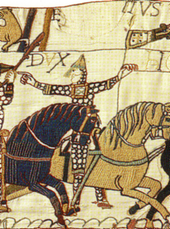

Beads may be divided into several types of overlapping categories, based on different criteria such as component materials, manufacturing process, place or period of origin, surface patterning, or general shape. In some cases, such as millefiori and cloisonné beads, multiple categories may overlap in an inseparably interdependent fashion.
Components
Beads can be made of many types of materials. The earliest beads were made of convenient natural materials; when found, these could be readily drilled and shaped. As human technology became capable of obtaining or working with more difficult natural materials, those were added to the range of available substances. The same was true of new synthetic materials when created.
In modern manufacturing, the most common bead materials are plastic, glass, metal, and stone.
Natural materials
Beads are still made from many naturally-occurring materials, both organic (i.e., of animal- or plant-based origin) and inorganic (purely mineral origin). However, some of these materials now routinely undergo some extra human processing beyond mere shaping and drilling, such as color enhancement via dyes or irradiation.
The natural organics include bone, coral, horn, ivory, seeds (such as tagua nuts), animal shell, and wood. For most of human history, pearls were the ultimate precious beads of natural origin because of their rarity, although the pearl-culturing process has now made them far more common. Amber and jet are also of natural organic origin, although both materials have undergone partial geologic fossilization.
The natural inorganics include various types of stones (from gemstones to common minerals) and metals. Of the latter, only a few precious metals occur in pure forms, but other purified base metals may as well be placed in this category along with certain naturally-occurring alloys such as electrum.
Synthetic materials
The oldest-surviving synthetic materials used for beadmaking have generally been ceramics: pottery and glass. Beads were also made from the ancient alloys such as bronze and brass, but as those were more vulnerable to oxidation, those have generally been less well-preserved at archaeological sites.
Many different subtypes of glass are now used for beadmaking, some of which have their own component-specific names. Lead crystal beads have a high percentage of lead oxide in the glass formula, increasing the refractive index. Most of the other named glass types have their formulations and patterns inseparable from the manufacturing process.
Plastic fusible beads are also known as Perler Beads, or called "melty beads" by young children. These small colorful beads can be placed on a solid plastic-backed peg array to form designs and then melted together with a clothes iron; alternately, they can be strung into necklaces or bracelets, or woven into keychains. Fusible beads come in many colors and degrees of transparency/opacity, including varieties that glow in the dark or have internal glitter; peg boards come in various shapes and several geometric patterns.
.jpg)
.jpg)
.jpg)




















